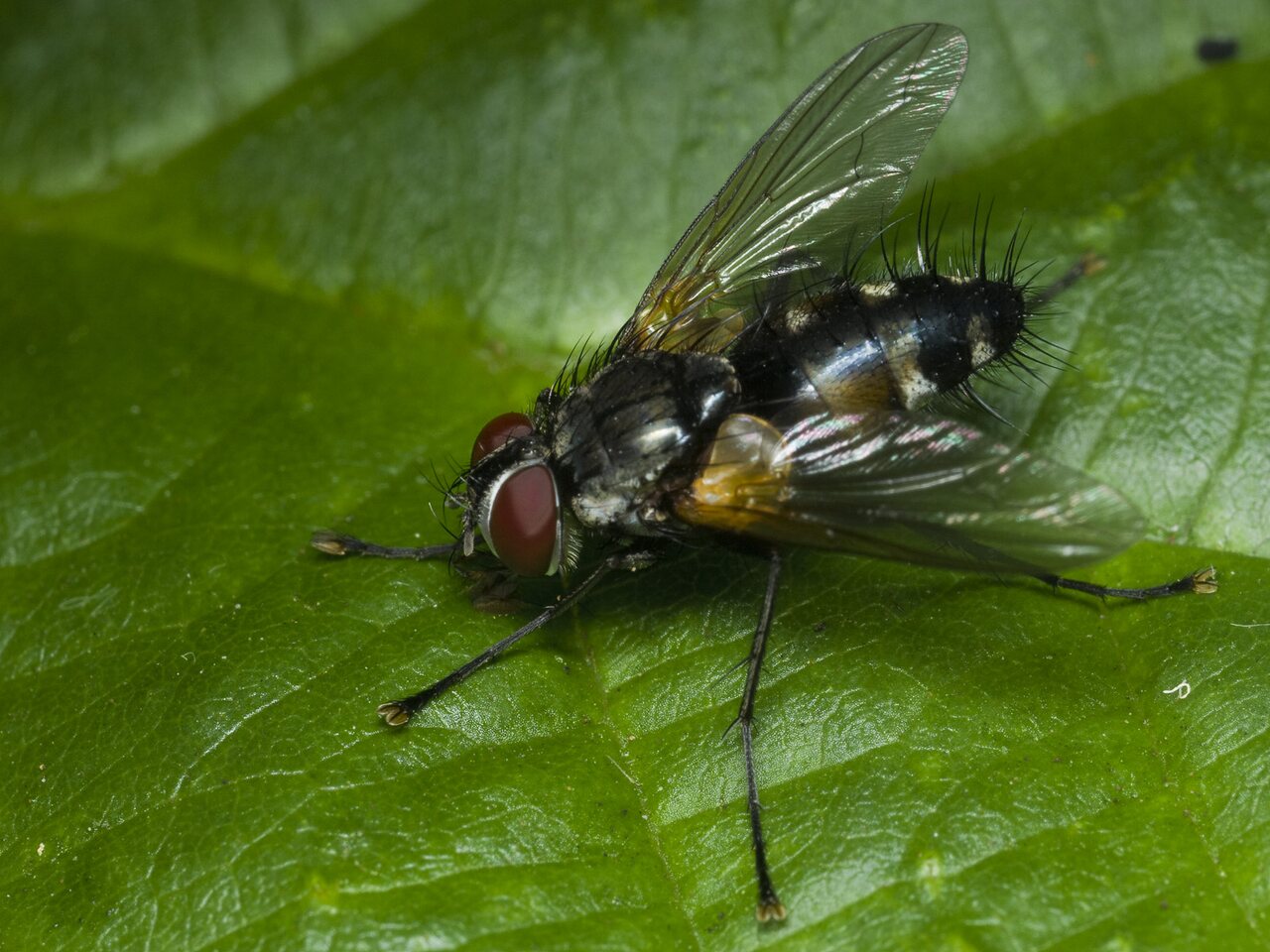
Thelaira nigripes · dygliamusė
det. Erikas Lutovinovas
- Thelaira nigrina
- Dark-sided Thelaira
- nieluba zeberka
- flickr.com/photos/63075200@N07/albums/72177720303474271
- en.wikipedia.org/wiki/Thelaira_nigripes
- naturespot.org/species/thelaira-nigrina
- gbif.org/species/1468138
A medium-large (body length 7.5-12 mm), long legged, big-eyed tachinid. Both sexes have broad grey dust bands across the base of tergites 3-5. The slimmer males can have the have the sides of the tergites dark, inconspicuously orange, or occasionally more conspicuously orange though the dark median stripe is usually more than one-third the width of the abdomen. The best way to separate males from those of T. solivaga are the fewer strong bristles on the mid tibiae (2-3 rather than 4) and the less obviously orange wing bases, with the calypters whitish rather than yellow-tinted. There are also subtle differences in the shape of the surstyli in side view. Females never have orange markings on the abdomen and are distinguished from those of T. solivaga but the 2-3 rather than 4 strong anterodorsals on the mid tibiae, slimmer front tarsi (the apical segments no wider than the basitarsus), whitish calypters, less yellow wing bases, and more heavily dusted appearance, with larger grey patches on the tergites and the thoracic dorsum extensively dusted.
It occurs in a variety of habitats including woodland, along hedgerows, in dunes, marshes etc., especially where bramble patches and tall herb is present. Males seem to hold territories from low, sunlit foliage such as burdock, nettle and bramble foliage. The larvae are internal parasitoids mostly of the caterpillars of tiger moths (Erebidae: Arctiinae) including Arctia caja (Garden Tiger Moth), Arctia villica (Cream-spot Tiger), Spilosoma lubricipeda (White Ermine), S. lutea (Buff Ermine). There are also records for the lasiocampid Malacosoma neustria (Lackey Moth) and the sphingid Deilephila porcellus (Small Elephant Hawkmoth). Adults fly from May to August.
‥
1 comment
Add a comment